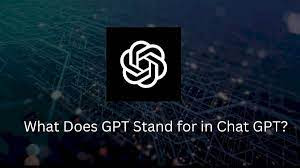GPT, or Generative Pre-trained Transformer, is a type of
artificial intelligence model that is trained to generate human-like text. It
can be used to generate text for a variety of purposes, such as generating
descriptions of images, creating chatbot responses, or writing articles.
To use GPT to generate an introduction for a blog post with
an image, you would first need to provide the model with some context about the
topic of the blog post and the image that you want to include. You could do
this by providing a prompt to the model in the form of a few sentences that
describe the topic and the image. The model would then use this information to
generate text that serves as an introduction to the blog post.
For example, you might provide the following prompt to the
model:
"Write an introduction for a blog post about the
benefits of gardening. The featured image for the post is a picture of a
beautiful garden with colorful flowers and a small pond."
The model might generate the following text as an
introduction to the blog post:
"Gardening has long been recognized as a hobby that
provides a number of benefits for both the body and the mind. From the physical
activity of tending to the garden, to the mental relaxation that comes with
being surrounded by nature, there are countless reasons to spend time in the
garden. The featured image for this post showcases just a small portion of the
beauty that a well-tended garden can bring. In this post, we'll explore some of
the many benefits of gardening and how it can improve your overall well-being."
To use GPT (Generative Pre-trained Transformer) for chat,
you will need to have access to a GPT model and a way to interface with it.
There are a few different ways you can use GPT for chat, depending on your
specific needs and resources:
1> Use a pre-existing chatbot platform that uses GPT: There are
several chatbot platforms available that use GPT or similar language models to
generate responses. Some examples include Replika and Mitsuku. These platforms
usually require you to sign up for an account and provide some information
about the type of chatbot you want to create (e.g., for customer service, for
casual conversation, etc.). You can then interact with the chatbot through the
platform's website or mobile app.
2> Use a GPT API: If you have some programming experience and
want to build your own chatbot from scratch, you can use a GPT API (Application
Programming Interface) to interface with a GPT model. OpenAI offers a GPT API
that you can use to generate text based on a given prompt. To use the API, you
will need to sign up for an account and obtain an API key. You can then use the
API to send a prompt to the model and receive the generated text as a response.
3> Use a GPT library: If you prefer to work with code and want more
control over the chatbot's functionality, you can use a GPT library, such as
the OpenAI GPT-3 Python library, to build your chatbot. This option requires a
good understanding of programming and may be more time-consuming, but it gives
you the flexibility to customize the chatbot to your specific needs.
Here is a general outline of how you might use GPT for chat:
Choose a platform or method for interacting with the GPT model (e.g., a chatbot platform, API, library).
Set up an account or obtain any necessary API keys or libraries.
Determine the type of chatbot you want to create (e.g., for customer service, for casual conversation).
Write a set of prompts and responses that the chatbot can use to initiate and continue a conversation. These should be specific to the type of chatbot you are creating.
Use the platform or method you have chosen to send the prompts to the GPT model and receive the generated responses.
Test the chatbot by interacting with it and making any necessary adjustments to the prompts and responses.
Deploy the chatbot on a website or mobile app, or make it available through some other means of communication (e.g., via text message).
GPT, or Generative Pre-trained Transformer, is a type of
artificial intelligence model that is trained to generate human-like text. It
is often used for chatbots, where it can be used to generate responses to user
input. Here are some pros and cons of using GPT for chat:
Pros:
Can generate human-like text: GPT has been trained on a
large dataset of human-generated text and has learned to generate text that is
similar in style and structure. This can make it appear more
"human-like" to users.
Can generate responses to a wide range of inputs: GPT has
the ability to generate text based on a wide range of prompts, which makes it
useful for chatbots that need to respond to a variety of user inputs.
Can generate responses quickly: GPT can generate responses
to prompts in real-time, which makes it useful for chatbots that need to have a
fast response time.
Cons:
Can generate responses that are not always accurate or appropriate: Because GPT is a machine learning model, it can sometimes generate responses that are not accurate or appropriate for the context. This can be a problem for chatbots that rely on GPT for generating responses.
Can be expensive: Depending on the platform or method you use to access GPT, there may be costs associated with using the model, such as API fees or licensing fees.
May require programming skills: If you want to use GPT
through an API or library, you will need some programming skills to set it up
and integrate it into your chatbot.
Thanks for reading,
BKTantra....🖊


